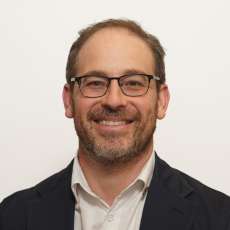Matt, could you tell us briefly about your background?
I’m a new CEO—about ten months in—though I’ve been with SCS for nine years. When our founder passed away, the board ran a search that considered both internal and external candidates, and I was chosen at the end of that process.
Before SCS I worked in renewable energy, running a biodiesel venture in North Carolina and organizing a sustainable-biofuels conference. That drew me to the Roundtable on Sustainable Biofuels (now Sustainable Biomaterials), where I became Americas Coordinator. When RSB’s standard became commercial, SCS applied to audit it—that is how I met the company, later joining to manage the renewable-energy portfolio. I never set out to be CEO; I built a strong business unit, and that success ultimately led to my appointment.
Do you think we can speak of the rise of “green-collar” jobs today?
This shift has been under way for more than a decade; it didn’t just appear. What I see is innovation increasingly driven by environmental outcomes—efficiency, air and water quality, climate impacts—rather than a separate “green-collar” category.
Throughout history, business chases better ways of operating, and today environmental factors steer that innovation. Consumers want healthier, lower-impact products, so companies respond. I view that as mainstream business evolution, not the emergence of a niche labor class.
How does SCS ensure its employees are prepared to validate this ‘evolution’, as you call it?
Our first requirement is still hard science. We hire chemists, physicists, biologists, agronomists—people who grasp the fundamentals behind the claims we verify. Auditing techniques can be taught; scientific literacy cannot.
We run an internal learning hub and lengthy onboarding: program-specific training lasts from three months up to a year. New auditors shadow seasoned staff, practice interviewing, and learn to interpret audit data. Because we are a people-driven professional-services firm, we invest heavily in professional expertise and real-world “field” experience.
Do you have a sense that your clients are truly ready to pursue innovation through an environmental lens?
Our work serves a business imperative: clients hire us because verification creates market value. Requests usually come from customer pressure, regulatory entry, or brand-positioning needs.
Most of our partners are forward-thinking, but purpose alone does not pay the bills—consumer demand for “non-GMO,” “lower-carbon,” and similar claims does. Environmental performance aligns with revenue, efficiency, or new-market access, so companies engage us both for impact and for profit, giving them further incentive to innovate through that lens.
How do you ensure SCS Global Services’ certifications do not serve as a form of greenwashing?
Fighting greenwashing is precisely our role. We are a science-based organization, sometimes pricier than competitors because we insist on deeper diligence; our value proposition is trust.
Standards vary: niche, high-bar schemes move the performance frontier, while mainstream, lower-bar schemes achieve broad uptake and huge aggregate impact. Together they stretch the market forward, and our rigorous auditing under either standard assures stakeholders that the claimed performance is real.
Do companies you certify attract environmentally conscious young talent more easily?
I do not have hard data linking certification to easier recruiting, so I cannot state that conclusively. My intuition, though, is that young people gravitate toward innovation and meaningful work, and environmental performance is driving much of the next wave of innovation.
At SCS we certainly feel the pull: every posting draws hundreds of applicants within days, and competition is Ivy-League tight. Our mission, culture, and reputation for credible sustainability work make us a magnet for top talent, especially those who want to be at the forefront of change.
Where do you want the SCS workforce to be in five years?
Technology—especially AI—will handle more repetitive tasks, letting us focus on the human-centered work: interviewing, synthesizing insights, and connecting operational dots. That will make our jobs richer and our audits sharper.
With tools that expand sampling—remote sensing, continuous data feeds—we will be able to verify year-round instead of once a year, and assess much larger areas, e.g. 500 hectares instead of 50. Greater coverage means greater trust, higher market value, and even stronger appeal to talented professionals who want to see tangible impact.





